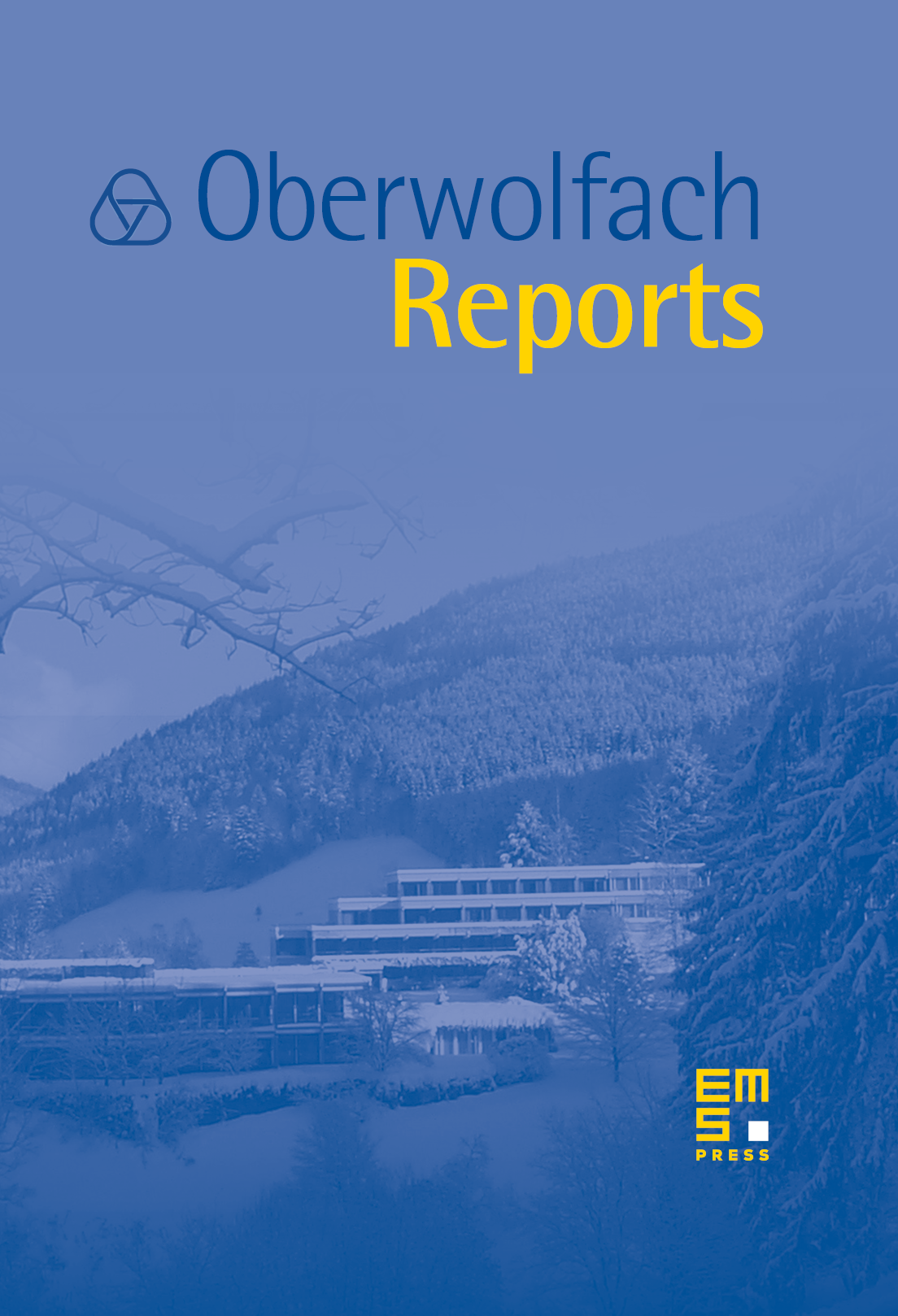Analysis and Geometric Singularities
Jochen Brüning
Humboldt-Universität zu Berlin, GermanyRafe Mazzeo
Stanford University, USAPaolo Piazza
Università di Roma La Sapienza, Italy

Abstract
This workshop was a successful and happy meeting of 23 researchers working on various aspects of partial differential equations on singular spaces and noncompact manifolds. This field encompasses such diverse topics as cohomology, harmonic analysis and spectral analysis on locally symmetric spaces, spectral geometry, and constructions of metrics with special geometry. All of these topics, and several others, were covered extensively at this meeting.
One noteworthy feature was a series of four expository survey talks by leading experts. These served to stimulate extensive discussion which carried over into all the other sessions. Lizhen Ji presented a view of the extensive compactification theory for locally symmetric spaces; Werner Müller gave a detailed survey of harmonic analysis on locally symmetric spaces, leading up to a presentation of his important new work in this area; Thomas Schick discussed the topological and algebraic techniques now used extensively in index theory; finally, Michael Singer explained some of the analytic aspects of the burgeoning field of extremal Kähler metrics.
The rest of the talks complemented these surveys. For example, Leslie Saper presented an overview of his recent and ongoing work on the cohomology of locally symmetric spaces and the algebraic machinery of -modules he has developed for this goal. Gilles Carron talked about the cohomology of QALE spaces and Eugenie Hunsicker's talk explored further relationships between and intersection cohomology theory on manifolds with fibred boundaries, while Ulrich Bunke discussed his recent work on twisted K-theory. There were several talks on more traditional problems in spectral geometry, including one by Iosif Polterovich on new methods to obtain lower bounds for the spectral function of the Laplacian, one on estimates for the first positive eigenvalue of the Dirac operator by Bernd Ammann, Daniel Grieser's talk on the ‘max flow min cut’ method adapted from graph theory applied to the estimation of the Cheeger constant, and Sergiu Moroianu's talk on the disappearance of the essential spectrum for certain magnetic Laplacians. Talks focusing on metrics with special geometry included the one by Robin Graham on the Dirichlet-to-Neumann operator for Poincare–Einstein metrics, Hartmut Weiss' results on deformations of three-dimensional constant curvature cone metrics, and Frank Pacard's presentation of his construction, with Arezzo, of new constant scalar curvature Kähler metrics. Finally, Nader Yeganefar discussed his work on topological restrictions associated with quadratic curvature decay.
One of the things that stood out about this meeting was the spirited participation by a number of young researchers, many of whom are clearly poised to take their places amongst the next generation of leaders in this field. The quality of the talks was uniformly high, and their clarity certainly furthered the main goal, which was to further stimulate the discussion between the various groups of researchers at this meeting.
Several major results were announced and discussed here. These illustrate that this field is now reaching a certain maturity. A number of these problems have been outstanding for many years, but new ideas have finally allowed for more serious attacks on problems of a truly global nature, and on problems involving iterated singularities. In any case, the meeting certainly demonstrated the current vitality of this field.
Cite this article
Jochen Brüning, Rafe Mazzeo, Paolo Piazza, Analysis and Geometric Singularities. Oberwolfach Rep. 2 (2005), no. 3, pp. 2187–2240
DOI 10.4171/OWR/2005/39